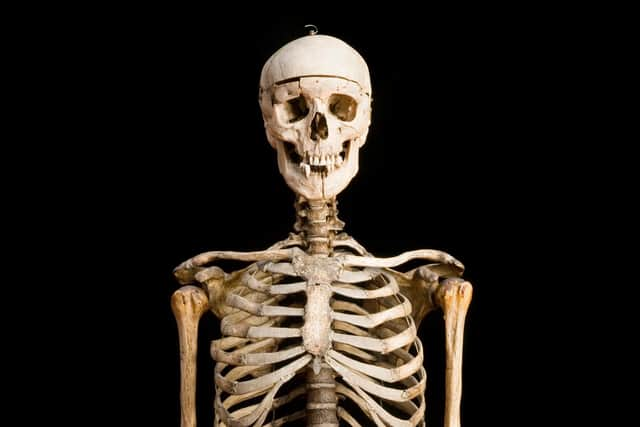Burke and Hare to take centre stage in exhibition recalling Edinburgh’s ‘murky’ medical history
The dissection of human bodies for medical study over more than 500 years will be explored in a four-month show at the National Museum of Scotland.
The exhibition will recall how Edinburgh was at the heart of a “murky industry” that saw William Burke and William Hare kill 16 people in the space of ten months in 1828 so they could sell their bodies to anatomist Robert Knox.
Advertisement
Hide AdAdvertisement
Hide AdHare was famously granted immunity from prosecution after agreeing to give evidence against Burke, whose skeleton and written confession will be among the exhibits going on display next summer.
Anatomy: A Matter of Death and Life will explore the circumstances that provoked their killing spree, recall the public reaction to their crimes and “unpick’ the relationship between science and deprivation in Edinburgh in the 18th and 19th centuries as the city became the UK’s leading centre for medical teaching.
The exhibition will recall how demand for bodies to dissect and study vastly outstripped legitimate supply. Before long, the acquisition of bodies became intertwined with poverty and crime, with grave-robbing an increasingly common practice.
The exhibition will also draw a contrast with the ethics, practices and beliefs of the modern-day medical world and the approach to body donation at Scottish universities.
Highlights of the exhibition, which runs from July to November, include some of the earliest examples of anatomical art, including sketches by Leonardo da Vinci, who dissected more than 30 human corpses.


The exhibition will showcase miniature coffins and the human effigies which were found inside them in a cave on Arthur’s Seat in 1836 by a group of schoolboys hunting for rabbits – a discovery that caused a media sensation at the time and remains a mystery to this day.
Other displays will feature a medicine cabinet used at the Battle of Culloden, a heavy iron “mort safe” box placed over a coffin to deter would-be body-snatchers, a full-body anatomical model by pioneering French model-maker and anatomist Louis Auzoux, and ground-breaking casts of body parts.
Advertisement
Hide AdAdvertisement
Hide AdAn official announcement on the exhibition states: “Anatomy: A Matter of Death and Life will examine the social and medical history surrounding the practice of dissection of human bodies.
"It looks at Edinburgh’s role as an international centre for medical study and offers insight into the links between science and crime in the early 19th century."


Dr Tacye Phillipson, senior curator of modern science at the museum, said: “Anatomical knowledge is crucial to medicine and Edinburgh was a key centre for medical teaching and the development of modern medicine.
"However, this work relied on the dissection of bodies, the sourcing of which was often controversial and distressing.
"Anatomists could only get the quantity of bodies they wanted through dehumanising the dead and financing a murky industry.
"Murder was a particularly shocking consequence of this, with people killed for the sale price of their bodies.
"This fascinating exhibition explores the relationship between society, poverty, ethics and science at that time, and exposes the human cost of early medical advancement.”
Comments
Want to join the conversation? Please or to comment on this article.
